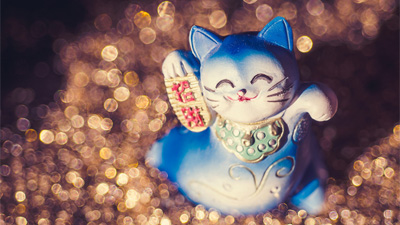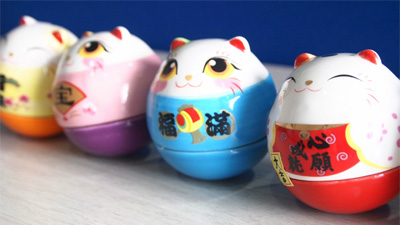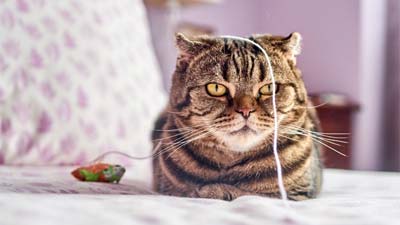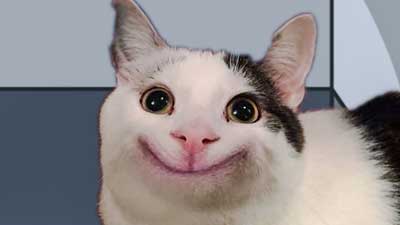What is a Cat Called in Japan?

Photo by Samuel Branch on Unsplash
In the intricate tapestry of Japanese culture, cats have woven themselves into the hearts and homes of the people, bringing with them a sense of mystery, playfulness, and above all, charm. Known for their whimsical presence in folklore, art, and daily life, cats in Japan are more than just pets—they are revered and celebrated in a unique way that transcends their role as mere companions.
In this article, we delve into the fascinating world of what a cat is called in Japan, uncovering the layers of meaning and cultural significance behind these endearing feline identities.
The Basics: What is a Cat Called in Japan?
In Japan, a cat is commonly referred to as "Neko" (猫). This simple yet versatile term encapsulates the essence of these enigmatic creatures that have etched themselves into the cultural fabric of the country. Pronounced "neh-ko," this word is not just a label; it's a gateway to a world of symbolism, superstitions, and artistic inspiration.
Neko in Japanese Folklore
Maneki-Neko: The Beckoning Cat
One of the most iconic representations of cats in Japanese culture is the "Maneki-Neko" (招き猫), or the beckoning cat. This figurine, often seen in storefronts, restaurants, and homes, features a cat with a raised paw as if waving in a beckoning gesture. The Maneki-Neko is believed to bring good luck and fortune to its owner.
The raised paw is thought to symbolize the beckoning gesture that invites prosperity and positive energy. Additionally, different colors of Maneki-neko hold specific meanings—white for purity, gold for wealth, black for protection, and calico for good luck. The Maneki-Neko embodies the endearing image of a cat as a harbinger of good fortune, reinforcing the positive associations with the feline presence in Japanese culture.
Bakeneko and Nekomata: Supernatural Cats
While cats are often seen as bringers of good fortune, Japanese folklore also explores the mysterious and supernatural aspects of these creatures. The "Bakeneko" (化け猫) and "Nekomata" (猫又) are mythical cat-like beings with supernatural abilities.
The Bakeneko is believed to have the power to shape-shift into a human form, often appearing as a beautiful woman. These supernatural cats are said to possess magical abilities and can bring both blessings and misfortune to those they encounter.
The Nekomata, on the other hand, is often depicted with forked tails and the ability to manipulate the dead. Legends tell of Nekomata raising the spirits of deceased animals and humans. While these tales portray cats in a more ominous light, they add depth to the cultural narrative surrounding these enigmatic animals.
Cultural Significance of Neko
Neko is a Symbol of Good Luck
In addition to the Maneki-Neko, cats, in general, are seen as symbols of good luck and protection in Japanese culture. The belief in the positive energy that cats bring has led to their widespread depiction in art, literature, and everyday objects.
Cats are sometimes portrayed alongside deities or legendary figures, emphasizing their role as protectors and guardians. The association of cats with good fortune has embedded itself in Japanese society, contributing to the widespread adoration and appreciation of these charming creatures.
Neko in Art and Literature
Japanese art and literature have long embraced the allure of cats. From ukiyo-e woodblock prints to contemporary manga, cats often take center stage in creative expressions. Artists and writers draw inspiration from the playful antics, mysterious aura, and sheer cuteness of cats, capturing their essence on canvas and in words.
One famous example is the ukiyo-e artist Utagawa Kuniyoshi, who created a series of woodblock prints featuring anthropomorphized cats engaging in human activities. These whimsical prints, known as "Bijin-ga" or pictures of beautiful women, seamlessly blend feline charm with human-like qualities, creating a unique fusion of reality and fantasy.
Neko in Contemporary Pop Culture
In modern Japan, the fascination with cats continues to thrive. The concept of kawaii, or cuteness, plays a significant role in shaping contemporary pop culture, and cats are at the forefront of this movement. The internet phenomenon of cat videos and memes has only amplified the global appeal of these adorable creatures.
Cafés dedicated to cat lovers, known as "neko cafés," have become popular in urban centers. These establishments offer patrons the opportunity to enjoy a cup of tea or coffee in the company of resident cats. The soothing presence of these feline companions provides a therapeutic escape from the hustle and bustle of daily life.
Beyond Neko: Other Cat-related Terms
While "Neko" serves as the general term for a cat, the Japanese language offers various nuanced expressions related to cats. Here are a few notable examples:
Koneko (子猫):
Referring to a kitten, "Koneko" specifically denotes the youthful and adorable stage of a cat's life. The suffix "ko" means child, emphasizing the small and endearing nature of these furballs.
Nyanko (にゃんこ):
An affectionate and informal way of saying "Neko," "Nyanko" is often used when addressing cats with a touch of fondness. The addition of "nyan," an onomatopoeic term mimicking a cat's meow, adds a playful and endearing tone.
Nekomimi (猫耳):
Literally translating to "cat ears," "Nekomimi" refers to the portrayal of characters, often in anime and manga, with cat-like ears on their heads. This concept of anthropomorphism further highlights the fascination with cats and their integration into various forms of media and entertainment.
Neko no te mo karitai (猫の手も借りたい):
This expression, translating to "I'd even borrow a cat's paw," conveys a sense of desperation or being overwhelmed with tasks. The idea is that even a cat's paw, known for its gentleness, would be a welcome help in times of need.
Conclusion
In the language, folklore, and cultural expressions of Japan, a cat is more than just a domesticated animal. It is a symbol of fortune, a muse for artists, and a beloved companion that has etched its paw prints onto the collective heart of the nation.
From the beckoning gestures of the Maneki-Neko to the mischievous adventures of Bakeneko in folklore, cats in Japan embody a multifaceted identity that spans the spectrum from mysterious to adorable. As you explore the rich cultural tapestry of Japan, the term "Neko" becomes a portal into a world where the feline presence is both cherished and revered.
So, the next time you encounter a cat in Japan—whether in a bustling city, a serene temple garden, or the pages of a beloved manga—know that it carries with it the charm and enigma of "Neko," a creature that has gracefully woven itself into the very fabric of Japanese identity.
You May Also Like
 Cat CultureWhat Does The Maneki-Neko Symbolize?
Cat CultureWhat Does The Maneki-Neko Symbolize? Cat CultureThe Difference Between Maneki-Neko Left Or Right Paw?
Cat CultureThe Difference Between Maneki-Neko Left Or Right Paw? Cat CultureWhat Is The Origin Of The Maneki-Neko?
Cat CultureWhat Is The Origin Of The Maneki-Neko? Cat JokesThe Best Cat Jokes to Tickle Your Funny Bone
Cat JokesThe Best Cat Jokes to Tickle Your Funny Bone Lifestyle28 Funniest Cat Jokes Of All Time
Lifestyle28 Funniest Cat Jokes Of All Time LifestyleWhat Kind of Cat Breed Is Beluga?
LifestyleWhat Kind of Cat Breed Is Beluga?